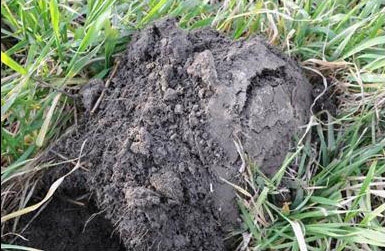After a very long and hot summer - where early in the season Western Flower Thrip was a real issue affecting fruit skin finish, and Two Spotted Mite was a huge problem throughout the season - there has been a lot of interest in cover crops to protect the soil surface; to minimise reflective heat; and as a refuge for beneficial insects.
This tends to raise some issues about what you sacrifice in terms of competition with fruit crops, for the soil improvement value of the cover crop.
Dan Towery (a well-known US cover crop researcher and promoter) said at a recent Cover Crop meeting in Altoona Iowa: “Below ground, cover crop growth may be more important than above ground”.
Essentially, there is no may about it. While the above ground growth (leaves and stems) are critical for soil protection and as a refuge for beneficial insects, the roots are probably as important for all the benefits that we see from cover crops.
Cover crop
Cover crop roots help build soil structure. The roots release exudates (complex carbohydrates), sugars and other compounds which act like glue to bind soil particles.
The rhizosphere (root zone), is also a hotbed of microbial activity. The sugars released by the roots feed and support the soil life, which in turn further builds soil structure.
There is increasing interest in applying biostimulants like humic acid and beneficial microbes to help trees handle abiotic stress. But without the right soil environment for these microbes to live in, they will not survive to give any long lasting residual effect.
A healthy soil with good structure will already have the beneficial microbes.
Roots
Not surprisingly, cover crop roots are really quite different from the cover crop top growth.
We often talk about the carbon to nitrogen ratios of the cover crop top growth in regards to whether the cover crop will tie up nitrogen or easily cycle nitrogen. Generally, carbon to nitrogen ratios that are below about 25:1 (between 20 and 30 to 1) will cycle nitrogen relatively well.
We see these ratios with young growing grasses like wheat and rye, but as the grass matures it lays down more carbon and more longer-lasting materials like lignin—the carbon to nitrogen ratio then increases to 60 to 1.
This will result in a longer lasting ‘mulch’ that has benefits in protecting the soil surface from the wetting and drying cycles of irrigation, and again as a refuge for soil dwelling beneficial insects (and unfortunately soil dwelling pests but this needs to be kept in balance and context).
The carbon to nitrogen ratios of cover crop roots is wider than for the top growth. Makes sense as roots are usually a storage organ for the plant, so more complex carbon molecules are laid down.
The carbon to nitrogen ratio of roots does not change with depth in the soil. It varies more with the crop and the crop growth stage. Generally, if the cover crops are immature and lush in their growth, the carbon to nitrogen ratio will be well within the 25:1 and nutrients will be readily cycled.
However, as the cover crop matures this changes, and the differences between species become more apparent. For example, for brassicas such as canola and grasses like wheat or rye, the ratio can be as high as 40 or 45 to 1. In contrast, legumes like peas are below 20 to 1.
Minimise the negatives
The inter-row areas may need to be slashed or mulched very low for frost protection.
The mulch thrown up onto the treeline is a beneficial soil conditioner, providing protection to the soil surface and tree roots, and a harbour for beneficial soil microbes and insects.
Flowering cover crops may be a problem as the cover crop flowers compete with fruit blossom for the attention of honey bees.
The cover crop flowers can also harbour pests like Western Flower Thrip (WFT). Flowers need to be managed to minimise any adverse effects.
Other cover crop advantages
- Canola (and other brassicas) have a biofumigation effect and a deep root system
- rye’s strong stems become a long-lasting mulch
- legumes provide nitrogen-fixing advantages.
For more information, see the April 2013 Tree Fruit




















